Abstract 1/2013
Magdalena Wyszomirska-Góra
Psychological determinants influencing everyday means of transport choices
Abstract. The continuous growth of car usage in everyday city journeys constitutes a significant threat to the natural environment and hinders the realization of agglomerations’ sustainable development plans. To understand reasons which make people prefer to use cars instead of public transport as well as how to change their behaviour constitutes a challenge to public transport organizers. Scientific area, which could provide insight into human behaviour and suggest possible solutions to change it is psychology. Conclusions stemming from research conducted in the fields of social and environmental psychology should be especially helpful. The review of literature indicates several psychological factors ignored by microeconomic models that influence individuals’ everyday transport choices. The first group of discussed factors concerns human attitudes and their relation to behavior. Next, the role of habits in individuals’ transport decisions is being analyzed. Then, biases appearing in human’s everyday functioning and their influence on the feeling of satisfaction are being discussed. The last group of factors focuses on the role of emotional processes. Taking the mentioned above agents into account while predicting the citizens’ everyday transport decisions, as well as constructing the information campaigns promoting public transport services could contribute to the passengers’ number growth.
Key words: transport psychology, sustainable development, ecology, transport behaviors, private transport, public transport,
Arkadiusz Książek
Analysis of zonal traffic calming solutions
Abstract :The introduction of traffic calming in city centre areas is one of the measures aimed at implementing the transport policy which is based on the principles of sustainable development. The comprehensive plans of introducing the traffic-calmed zones which include whole range of spot and linear measures start to appear in Polish cities. One of the examples is the city of Poznań which is completing the first stage of tempo 30 zone in the strict city centre. Since 2009, the zone of comprehensively calmed ‘Dutch town’ in Puławy has been functioning. However, one has to emphasize that it is crucial to carry out the preparation procedure properly in order to implement this type of investment. Introducing traffic calming should be preceded by the preparation of simulation model which helps to evaluate influence of the plans on the traffic in close surrounding as well as in the whole city. This paper contains the review of engineering measures of traffic calming and suggests the ways of simulating these measures. The proposed analysis instruments are illustrated by the example of a model built for the city of Bielsko-Biała. Three different versions of traffic calming zones are proposed in this model. VISUM software was used to evaluate the solutions and made it possible to verify the effects of traffic calming on traffic distribution in the city road network. The paper indicates future research directions and the possibilities of developing the methods of evaluating traffic calming zones.
Key words: traffic calming, sustainable transport, traffic modelling, urban traffic
Maria Zych
Requested stops system in Warsaw – passengers’ and bus drivers’ opinions.
Abstract: In Polish cities overuse of permanent bus stops instead of request stops has recently become frequent. A bus stop commonly known as ‘on demand’ (Polish ‘na żądanie’) is therefore underestimated and downplayed in its utility, even though plenty examples set by other foreign public transport systems prove that qualified stops are very likely to be used as a basis of this type of communication networks. That is why a research has been carried out in order to pinpoint future advantages of increasing the participation of requested bus stops in overall bus stops amount in Warsaw. Following article presents opinions of passengers’ and drivers’ of the Warsaw public transport concerning proposal of increase of number of request stops at the cost of permanent stops. This proposal was described as the system of request stops (SPNŻ). The data is based on the research’ results. The poll is also concerned about the functioning of so called ‘disorganized bus stops’ which serve for both qualified and permanent bus schedules. Another issue to analyze is a problem with ineffective bus stopping.
Having collected all the data, it is reasonable to draw the conclusion that, despite of some reluctance towards any changes, the majority of passengers and drivers would find it useful, to reorganize the Warsaw public transportation system. It has also been concluded that there is some social awareness and thus lack of agreement towards lawless actions taken by drivers, who often try to ‘fix’ the system by themselves and avoid stopping on the problematic bus stops. The existence of such stops has been questioned as well.
Key words: requested bus stops, urban bus transport, public transport
Rafał Kucharski
Acquiring data for traffic models – recent developments
Abstract: The paper shows possible improvements in the area of transport modeling. Employing databases and integrating them fully within transport modeling structure can bring improvement in quality of transport modeling. Many practitioners claim that data import is the next step of improvement for transport modeling.
The article shows projects where external databases were used in transport modeling. Examples include: transit database import using data from major Polish provider of transit passenger information, enhanced GIS network import, GIS spatial data import including comprehensive land-use information, integration of APNR results within transport modeling including database application integrated within transport modeling software.
Opportunity to include complex database systems in transport modeling and integrate them shows great potential to improve transport modeling, but it requires full integration at many levels. It should be further exploited to obtain full functionality and synergy of data within transport models. This requires more stress on database, and data-management techniques for transport modeling.
Key words: transport modeling, database systems, data integration, GIS,
Dorota Gajda, Kazimierz Jamroz
National strategies for road traffic safety to implement premises of the United Nations Decade 2011 – 2020
Abstract: Premises concerning road traffic safety 2011-2020 (so called Road Traffic Safety Decade) prepared for member states by the United Nations are described in the article. In the UN document entitled: “Global plan” 5 pillars of programs of road traffic safety have been indicated: management of road traffic safety, traffic participant, vehicle, infrastructure and traffic rescue service on which should be based national resolutions. On the examples of 5 states from different continents the method of realization of this international resolution has been presented. Acquaintance with different strategies for improvement of road traffic safety may help to choose suitable measures for the National Programme for Road Traffic Safety that is being created right now in Poland to replace previous GAMBIT programme.
Key words: road traffic, road traffic safety
Przemysław Dąbek
Public transport as a basis for attractive city centre
Abstract: This paper presents transfer point located in the city center as a part of transport system that allows smooth change of public transport passengers between different modes of collective public transport. It was noted that public transport and the passengers entered the sphere of the city center forms a base to build around the shopping arcade and entertainment cultural development of the area which provide opportunity to develop urban space and contributing at the same time with increasing of the attractiveness of the surrounding streets. Author of the article presents the history of the construction of a tramway in the centre of Będzin and describes further false decisions resulted with elimination of public transport from the main streets of the city, where the life of the city has been concentrated , which then worked with the slow disappearance of the typical city shopping mall. Due to the currently more widely implemented solution of construction of the interchange and replacement of individual car transport with public transport modernization urban space an attempt to assess the situation in Będzin has been undertaken. At the same time a reconstruction of the tram line on the main street of the city has been proposed, restoring its pre-war course which may contribute with a process of recapture of the passenger of the public transport, who may regain pre-war character of streets of the centre in Bedzin as a shopping-culture-entertaining precinct.
Key words: public transport, transfer point, tram, city space.

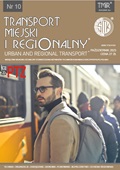 SITK
SITK 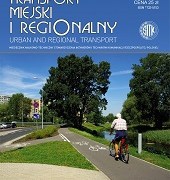
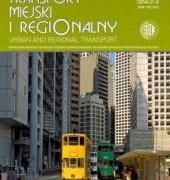 SITK RP
SITK RP 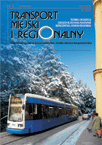 SITK RP
SITK RP 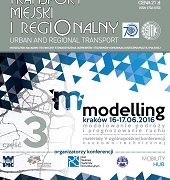 SITK RP
SITK RP 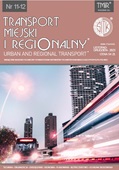 SITK
SITK 
 SITK RP
SITK RP SITK RP
SITK RP